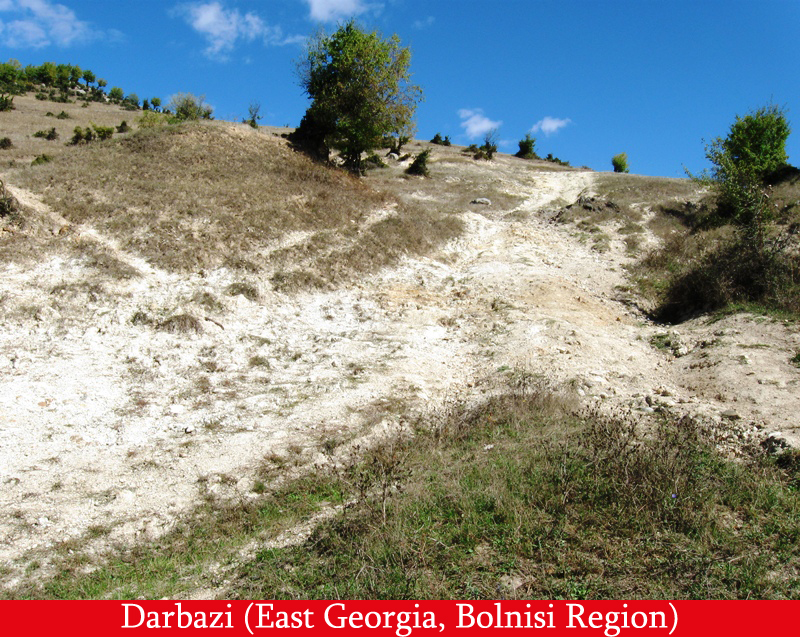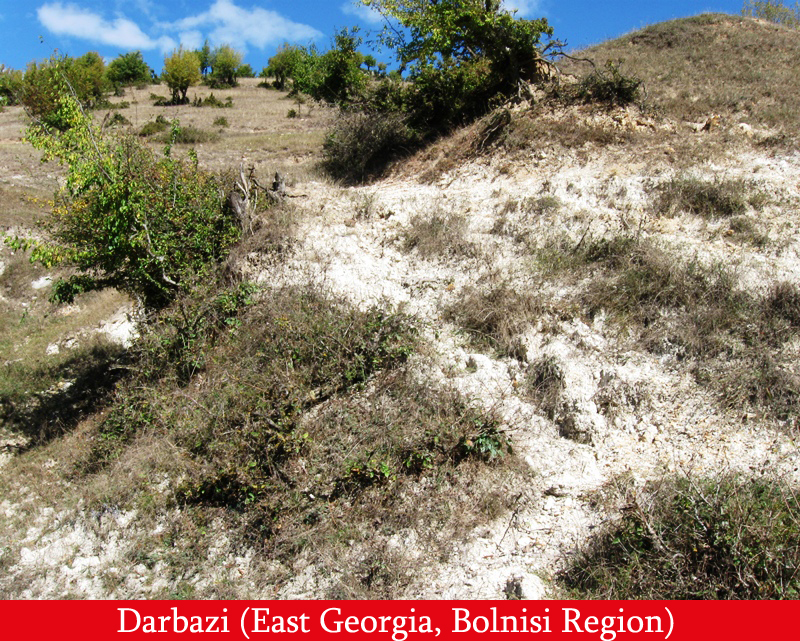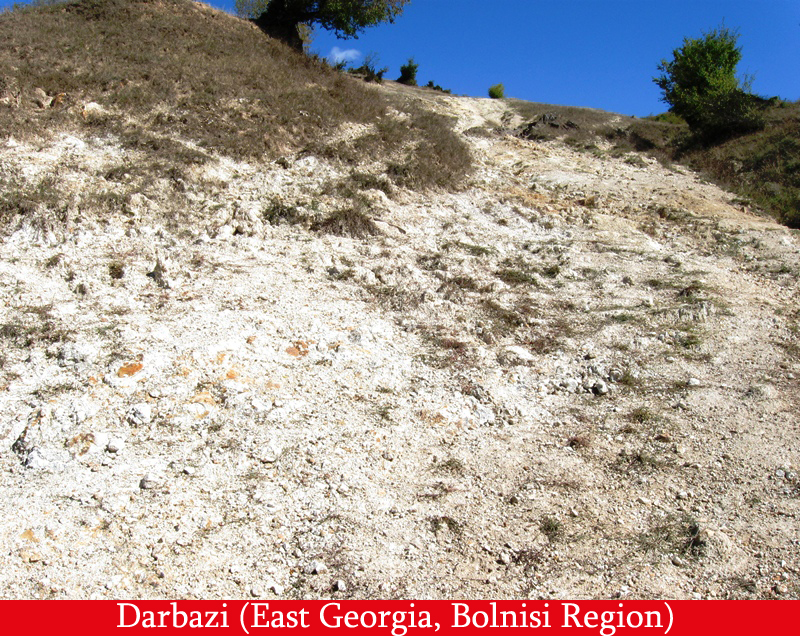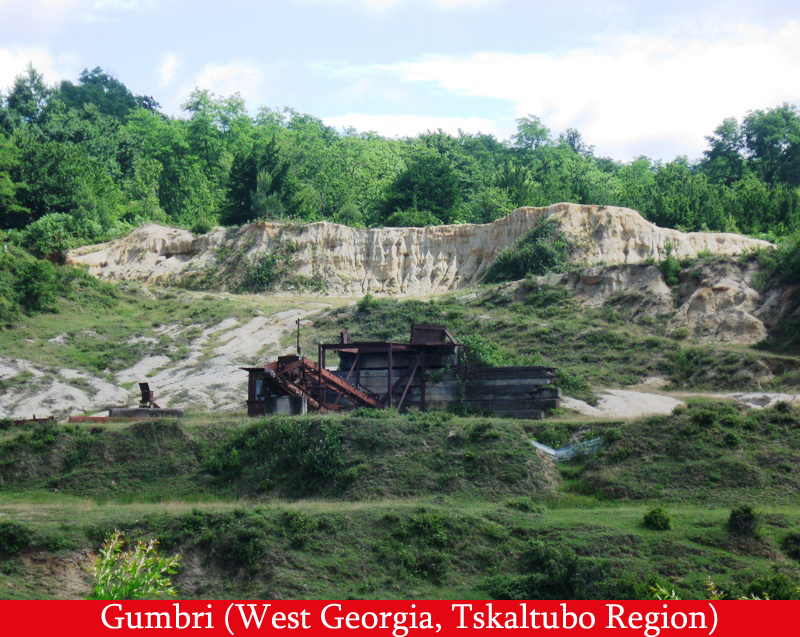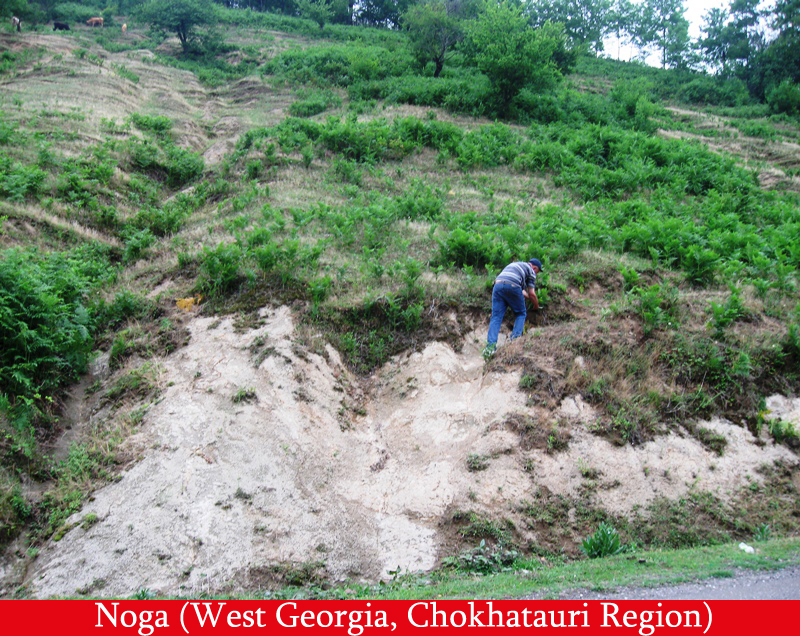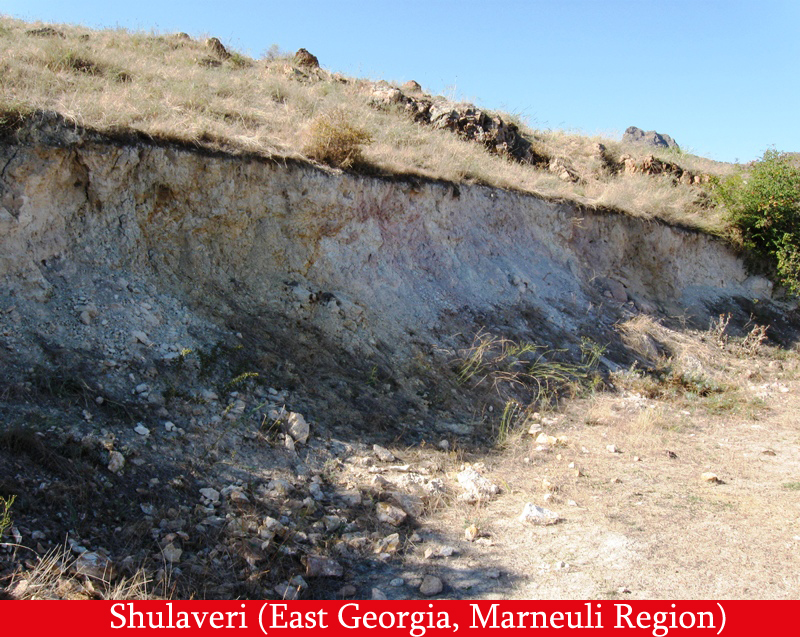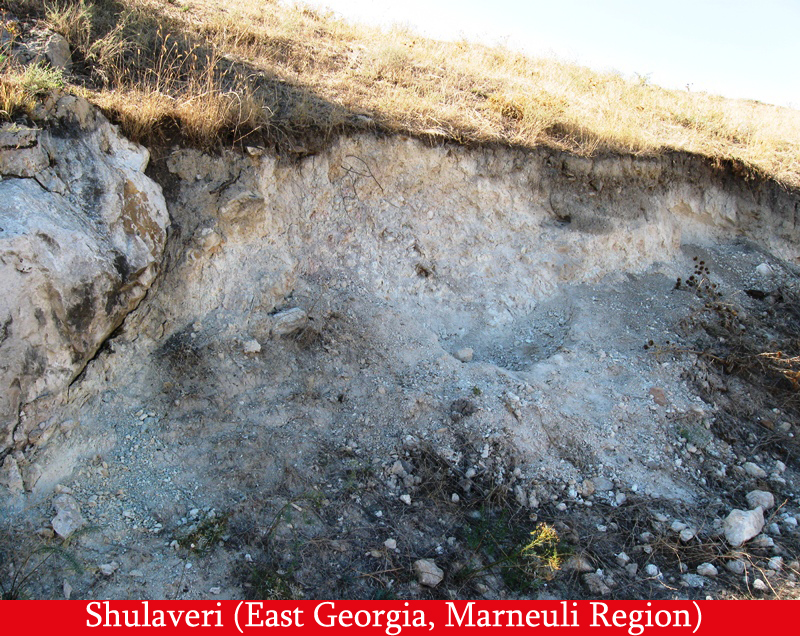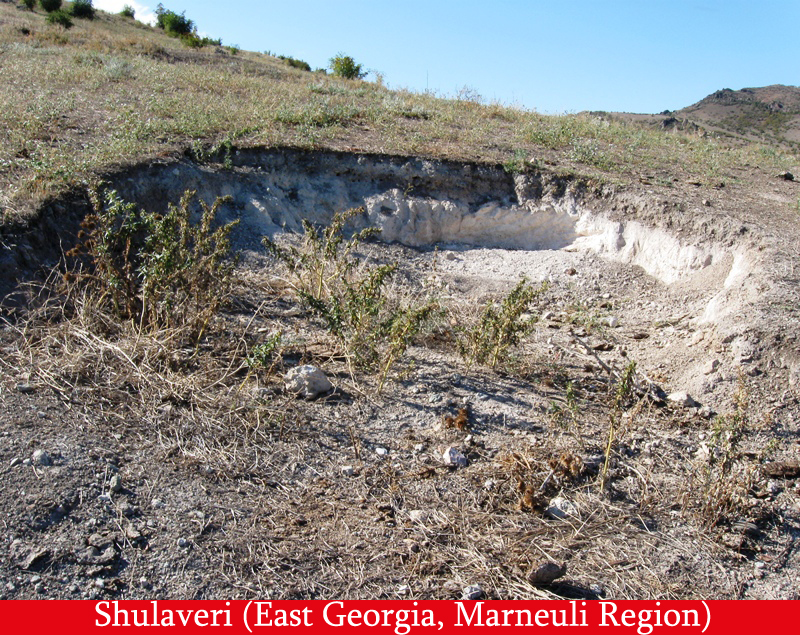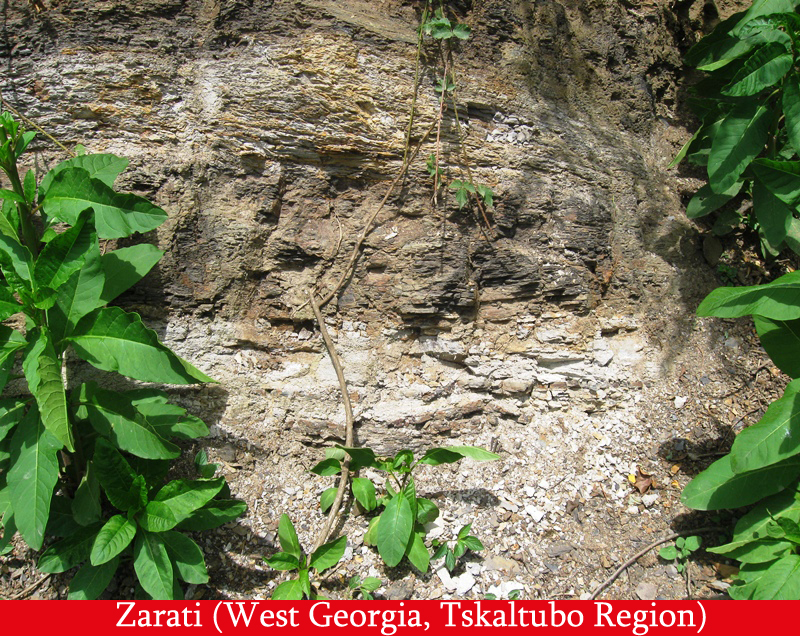A major part of extracted clay in the world makes up kaolin which is used in wood-pulp and paper industry in manufacturing of china, faience and refractory products.
Georgia is not an exception as well, numerous hotbeds of ceramics making have been known here since olden days and each of them was directly connected with a clay deposit.
Earthenware or its remains are practically found in all excavations of ancient man’s sites. Particular place in the earthenware took and takes black ceramics, known since about third millennium B.C. Traditions of making ceramics of this kind are related to Etruscans culture (ancient Etruria) as well as to the culture of ancient Georgia.
Georgia during all its history has been rich in traditions of using clays in medicine and cosmetology, in manufacturing earthenware, china and faience crockery and other articles.
Georgia is rich in different types of refractory raw materials. They are represented by alumosilicates, magnesial and siliceous clays.
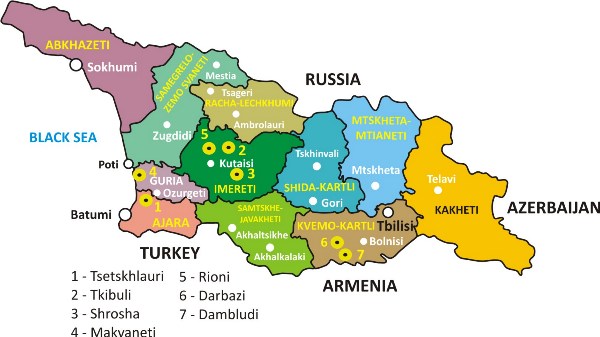
The clays often have impurities of accessory minerals: feldspars, quartz mica, pyroxenes, magnetite, limonite and other. The color of clays depends on the presence of iron oxides and black carbon.
On the territory of Georgia grayish - white, light-grey, dark-grey and yellow-red clays are mainly encountered. Their white and grayish-white variety is called kaolin. Deposits and shows of such clays are mainly connected with Jurassic cretaceous and tertiary rocks
Jurassic fire-clays are mainly associated with continental sediments and are situated on Georgian Block.
Chemical composition of the of some clay deposits of Georgia (%)
| Deposit | SiO2 |
Al2O3 | Fe2O3 | TiO2 | CaO | MgO | Na2O | K2O | SO3 |
P22O5 | L.O.I. |
| Kandara |
64.22 |
29.51 | 2.15 | 0.12 | 0.51 | 0.58 | 2.00 | 1.03 | 1.75 | - | 1.80 |
| Macharula | 51.89 | 31.98 | 2.46 |
1.15 | 0.81 | 0.18 | 1.44 | 0.25 | 0.88 | 0.05 | 9.69 |
| Gelati | 50.04 | 36.61 |
1.00 |
0.04 |
0.26 |
0.34 |
- |
- | 1.87 |
- |
12.65 |
| Djvari | 49.12 | 35.01 |
2.93 |
0.10 |
0.32 |
0.60 |
- |
- | - | - | 11.93 |
| Chartali | 53.20 | 28.42 |
0.49 |
0.90 |
0.18 |
0.36 |
1.34 |
5.69 |
0.10 |
- |
4.28 |
| Tsetkhlauri-1 | 47.06 | 28.26 | 2.60 | - | 0.49 | 0.35 | 1.10 | 0 | - | 9.90 | |
| Tsetkhlauri-2 |
47.58 | 26.98 | 1.42 | - | 0.55 | 1.99 | 2.44 | trace | - | 7.11 | |
| Tsetkhlauri-3 |
44.60 | 31.60 | 1.80 | - | 0.31 | 0.22 | 3.28 | trace | - | 10.22 | |
| Djikhadjvari | 65.64 | 22.32 | 1.74 | 0.90 | 0.44 | 0.96 |
0.36 |
3.25 |
2.46 | - |
4.10 |
| Ochkhamuri | 52.50 | 27.72 | 4.43 | 0.12 | 1.90 | 0.65 | 1.53 | 1.63 | 0.71 | - | 10.40 |
| MakvaneTi | 57.75 | 27.80 | 1.14 | 0.44 | 0.51 | 0.93 | 2.04 | 2.00 | 0.74 | 0 | 8.14 |
| Gogolauri | 47.30 | 32.96 | 2.04 | - | - | - | - | - | - | - | 7.84 |
| Eliatsminda | 57.70 | 28.00 | 1.80 | 0.85 | 1.37 | 0.74 | 0.41 | 0.70 | 0.23 | - | 8.25 |
| Cikarauli | 64.35 | 23.75 | 15.05 | 1.06 | 0.47 | 0.21 | 0.26 | 0.49 | - | - | 8.19 |
| Sormoni | 60.85 | 25.85 | 3.18 | - | 1.33 | 0.94 | 0.69 | 0.65 | - | 9.24 | |
| Rioni | 56.66 | 27.30 | 2.97 | - | 1.87 | 0.59 | 0.66 | 0.86 | - | 8.97 |
|
| Zarati | 58.53 | 22.69 | 4.95 |
- | 1.49 | 0.37 | 1.05 | 1.05 | - | 8.47 | |
| Dambludi | 64.64 | 23.26 | 10.30 | 0.61 | 0.63 | 0.43 | 1.10 | 3.88 |
0.14 | - | - |
As a model was chosen clay from the Darbazi occurrence.
Preliminary laboratory
studies of the Darbazi clay were conducted by geologist and free-lance
consultant Gian Paolo Bertolotti (R.M. Ricerche Minerarie
s.r.l. laboratory, Lozzolo, Italy). Research report and
expert's opinion see here ![]()







